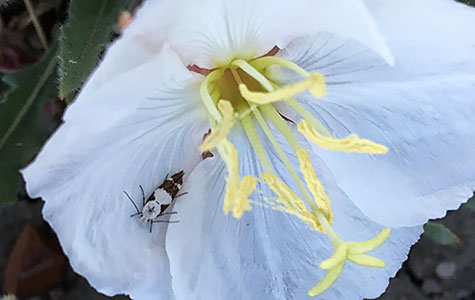
Scientists have discovered that what and how caterpillars eat has led to the evolution of new species. Plant-eating insects make up nearly 25 percent of all animals globally, but we know little about how this great diversity came to be. Historically, scientists have affiliated this diversity with insects eating foods of specific plants—think monarch caterpillars and milkweeds. In a recent peer-reviewed research publication in PlosOne, scientists Dan Bruzzese, Krissa Skogen, Ph.D., Norm Wickett, Ph.D., and colleagues show that the type of plant tissue that insects eat and how they eat it has been key in generating new species of moths in the genus Mompha. Over millions of years, the diversity of Mompha can be explained by moth caterpillars switching to new host plant species, plant parts (flowers, fruits, stems, leaves, roots), and how they eat (boring or galling). The study also identified new species that were previously unknown to science.

